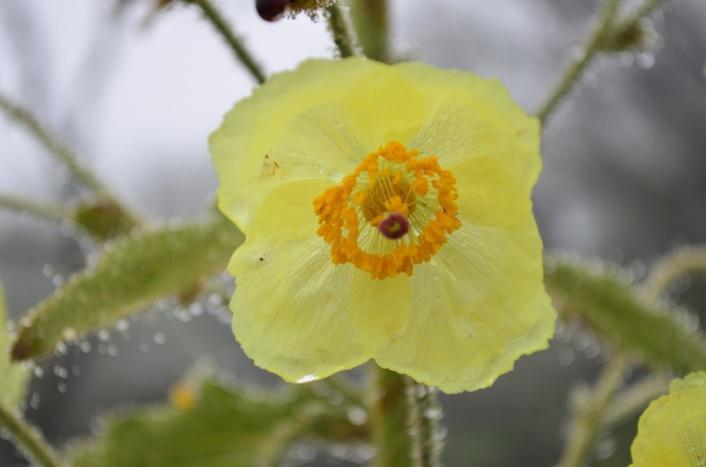Nawal Shrestha
The present work aims to identify vulnerable species, quantify threat level and promote sustainable management of medicinal plants using participatory community approach model. The findings of the present work will facilitate preparation of action plans and management strategies to conserve medicinal plants in Tinjure-Milke-Jaljale area.

Meconopsis paniculata
Tinjure-Milke-Jaljale (TMJ) area which is popularly known as the capital of Rhododendron lies between two successful protected areas, Kanchenjunga Conservation Area and Makalu-Barun National Park and is mostly recognized by the vast numbers of Rhododendron species it harbors (26 out of 32 species in Nepal). However, the information on the number of medicinal plants growing within it, the studies on their vulnerability and long term sustainability are meager and the conservation priorities program to protect them are insufficient and inadequate. In addition, high collection pressure due to increasing trade demand, without any substantial measures to regenerate them and unsustainable harvesting practices, has imposed serious threat to the medicinal plants thereby questioning their very existence.
Based on our preliminary survey, over 40 species are utilized as herbal medicines, one-third of which are already in different threat categories. Besides local utilization, majority of these species have high commercial value and a large proportion of them enter market channel through legal as well as illegal routes. In the recent years, increased collection pressure due to high trade demand has put most species under extinction risk. Unsustainable harvesting practices, on the other hand, has added further question on the long term survival of medicinal and aromatic plants. The natural resource base of TMJ area is, therefore, in dwindling condition. People are ignorant about conservation and the management programs are insufficient. Above all, the status of threatened medicinal species is largely unknown.
The present work will therefore address these key issues with the active participation of the community people who are direct beneficiaries of the resources. The primary aim is to quantify the level of threat and promote sustainable management of medicinal plant resources using participatory community approach model. Besides this, the work will be conducted to (1) assess the status and utilization of medicinal plants (2) identify vulnerable species and evaluate their extinction risk and (3) prioritize medicinal species for cultivation and further conservation. In addition, the present work will also facilitate social awareness programs and training campaigns on sustainable utilization, cultivation and harvesting methods of medicinal plants to ensure their long term viability. The findings of the present work will facilitate preparation of action plans and management strategies for conservation and sustainable management of threatened medicinal plants in TMJ area.